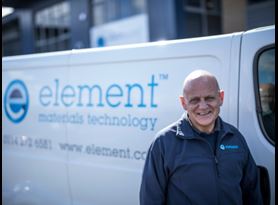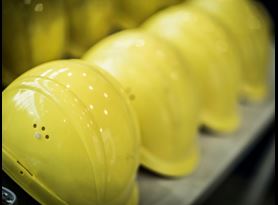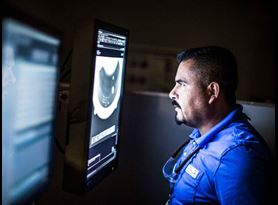Replication Metallography: A Non-Destructive Solution
Our clients often require metallurgical evaluations on samples that may not be modified or otherwise “destroyed” for various reasons. In these cases, we perform replication metallography, which is the non-destructive testing (NDT) practice of duplicating the microstructure of a component in order to observe grain structure at high magnification.
The Benefits
The benefits of using replication metallography include factors such as:
- Lower Cost: If a project requires many specimens to be sectioned and mounted, this can become very costly. Plus, each part is destroyed and can no longer be used. Replication does not require either of these.
- On-Site Evaluation: Replication metallography presents the opportunity to be able to replicate in the field - without taking the specimen out of service.
- Abnormal Size or Dimensions: Large or irregularly-shaped specimens may be replicated with relative ease.
The Process
POLISHING
In using replication metallography, the main goal is to polish the desired surface to a very smooth and mirror-like finish. The preparation of the surface is very important and crucial to having a successful replication. With typical metallographic evaluations, the specimen itself is placed inside a hard mount, and an automatic polisher is used to achieve the mirror-like finish. However, when using an NDT method such as replication metallography, the sample may not be cut and mounted, which means that hand polishing is required. Pneumatic die grinders with various steps of grit paper are often used during this process. As a final step, a buffing pad with a diamond compound is applied to achieve our desired finish.
ETCHING
After the specimen has been polished by hand, a chemical etchant is then applied to the polished surface to reveal the grain structure of that material. To ensure a proper etch, different types of etchants are used for different materials, and are exposed for longer or shorter periods depending on the desired location.
REPLICATION MEDIA
From here, a replicating media will be applied to the polished surface with a small gun and a static mixing nozzle. The media will sit on the surface for a brief amount of time to dry and capture the grain structure of the etched surface. The replicating media replicates the surface of the material much like silly putty does when applied to a newspaper. The dry media is then placed onto a microscope, where the process is completed by evaluating the grain structure of the specimen.
Analysis techniques
Replication metallography techniques can support a wide variety of analysis methods, including:
- DoS testing and ERP measurements
- Creep damage assessment
- Thermal degradation of the materials
- Failure analysis/crack analysis
- Graphitization
- Hydrogen Embrittlement (HE)
- Stress Corrosion Cracking (SCC)
- Intergranular Corrosion (IGC)
For more information on Replication Metallography or to contact our experts for further discussion, please contact us today.
Find related Resources
Related Services

On-Site Metallographic Testing and Analysis
Element offers a wide portfolio of on-site metallographic testing and analysis to monitor real-time component condition and detect potential or existing damage.

On-Site EPR Measurements - DoS Testing
Element performs on-site Electrochemical Potentiokinetic Reactivation (EPR) to determine the Degree of Sensitization (DoS) for faster and more efficient test results.

Non-Destructive Testing (NDT)
Element's NDT services comply with a wide variety of industry standards, government contracts, military specifications and unique customer requirements.

Local laboratories, global platform
Doing business with one of our laboratories enables our clients' access to our global platform of expertise, capacity and capabilities.